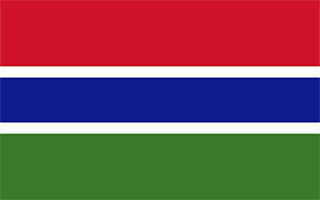Facts and Data
Webpages:
Official Unesco Page
Basis Data:
Unesco World heritage since: 2003
Size of heritage: 7.60 ha
- Buffer zone: 300 ha
Coordinates:
Longitude: -15,643°
Latitude: 13,316°
Summary
James Island and Related Sites present a testimony to the main periods and facets of the encounter between Africa and Europe along the River Gambia, a continuum stretching from pre-colonial and pre-slavery times to independence. The site is particularly significant for its relation to the beginning of the slave trade and its abolition. It also documents early access to the interior of Africa.
Location on Map
Show bigger map on Openstreetmap
Kunta Kinteh Island and Related Sites: A Glimpse into the Dark Past
Kunta Kinteh Island and Related Sites, located in the Lower Niumi and Upper Niumi districts and Banjul Municipality of Gambia, is a UNESCO World Heritage site that holds immense historical significance. This site, also known as James Island, is a haunting reminder of the transatlantic slave trade and the suffering endured by countless individuals.
A Dark History
During the 16th to 19th centuries, Kunta Kinteh Island served as a major trading post for European powers involved in the slave trade. The island was a key hub for capturing, detaining, and shipping enslaved Africans to the Americas. It was named after Kunta Kinteh, a young man who was captured from this very place and later became the protagonist of Alex Haley's novel "Roots."
The island's strategic location at the mouth of the Gambia River made it an ideal spot for European traders to establish their presence. The British, French, Portuguese, and Dutch all vied for control over this lucrative trade route, resulting in numerous conflicts and changing hands multiple times.
The Current State
Today, Kunta Kinteh Island and Related Sites stand as a solemn reminder of the atrocities committed during the transatlantic slave trade. The island itself is relatively small, covering an area of approximately 1.5 hectares. It is characterized by the ruins of Fort James, a fortification built by the British in the early 18th century.
The fort, constructed with local stone and later reinforced with imported bricks, served as a stronghold for European powers engaged in the slave trade. It consisted of various buildings, including barracks, warehouses, and a governor's residence. The dilapidated state of these structures reflects the passage of time and the island's tumultuous history.
Visitors to Kunta Kinteh Island can explore the ruins and gain insight into the conditions endured by enslaved Africans. The remnants of the slave quarters, dungeons, and punishment cells provide a chilling glimpse into the horrors of the past. The island's museum, located within the fort, further educates visitors about the transatlantic slave trade and its impact on both Africa and the Americas.
Efforts have been made to preserve and protect Kunta Kinteh Island and Related Sites. In 2003, it was inscribed as a UNESCO World Heritage site, recognizing its universal value and the need to safeguard its historical significance. The Gambian government, in collaboration with international organizations, has implemented conservation measures to ensure the site's long-term preservation.
Furthermore, the island serves as a place of remembrance and reconciliation. It has become a symbol of resilience and a testament to the strength of the human spirit. Every year, on the 6th of April, the Gambian people commemorate the Day of Remembrance for the Victims of the Transatlantic Slave Trade, honoring the memory of those who suffered and perished.
Kunta Kinteh Island and Related Sites stand as a stark reminder of the dark chapter in human history that was the transatlantic slave trade. It serves as a powerful educational tool, urging us to remember the past, learn from it, and strive for a more just and inclusive future.
